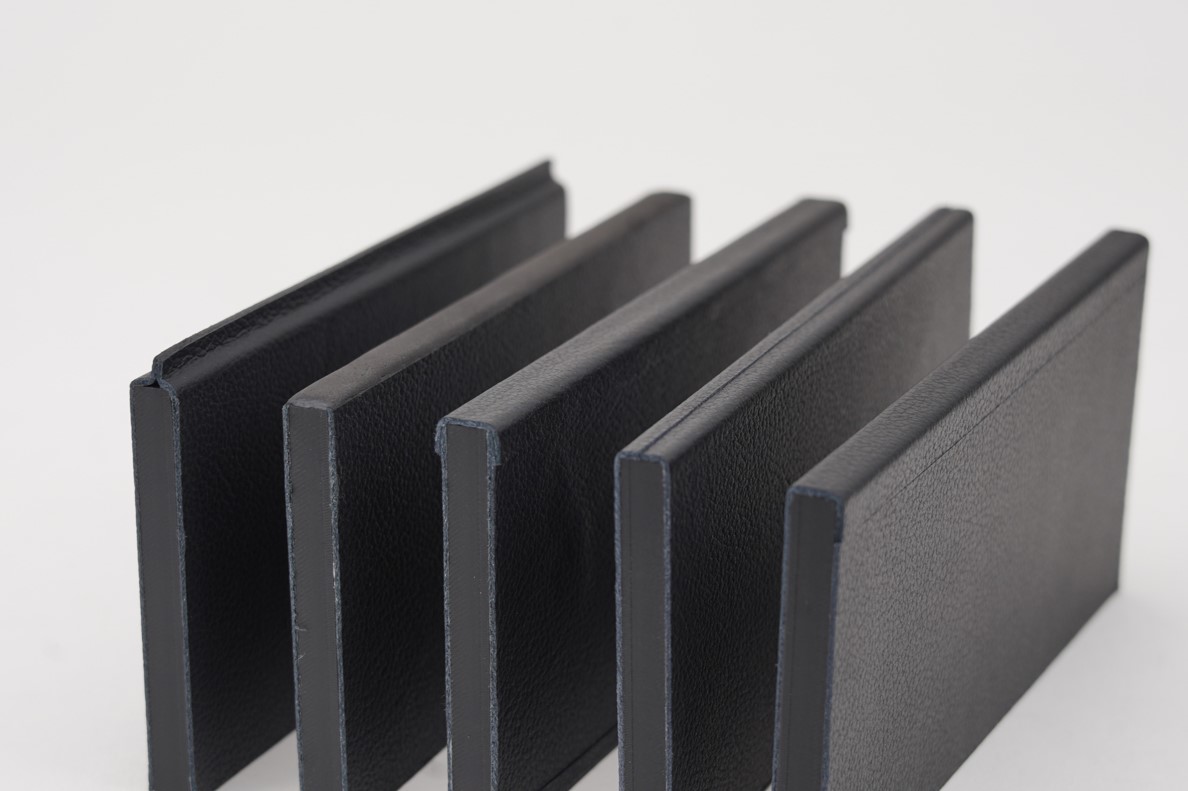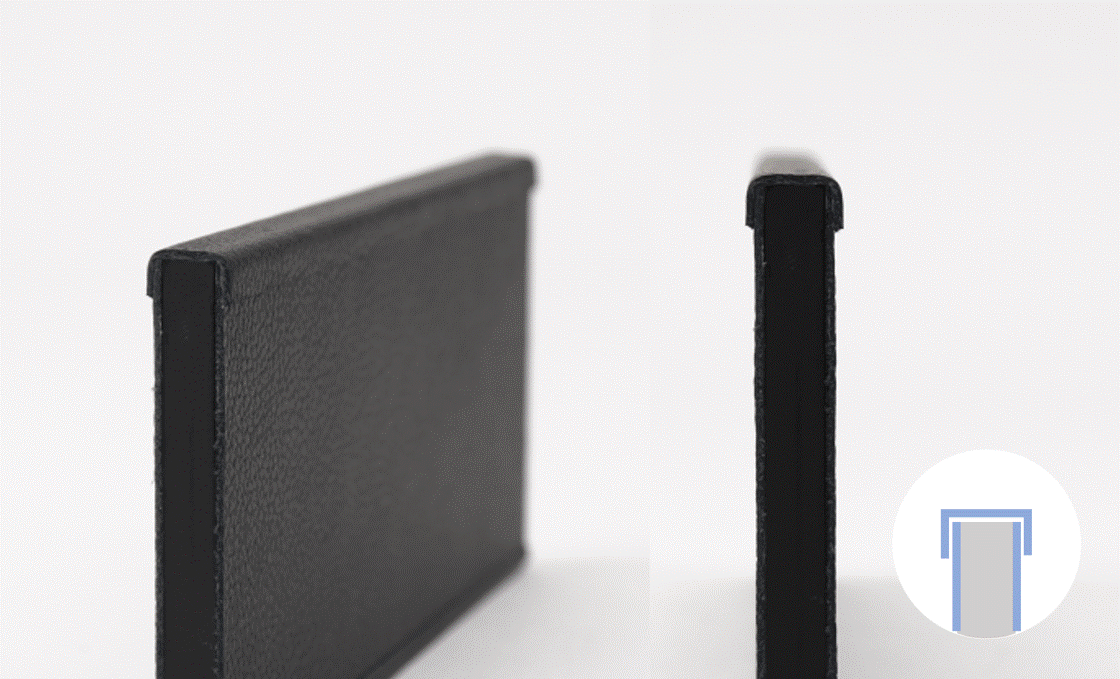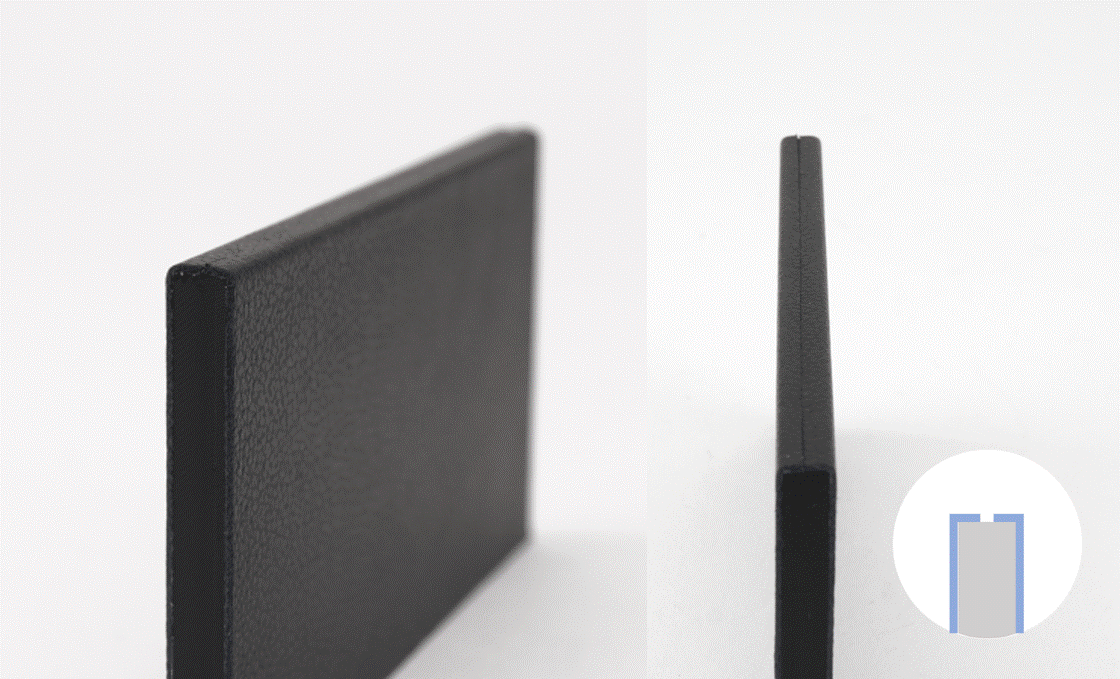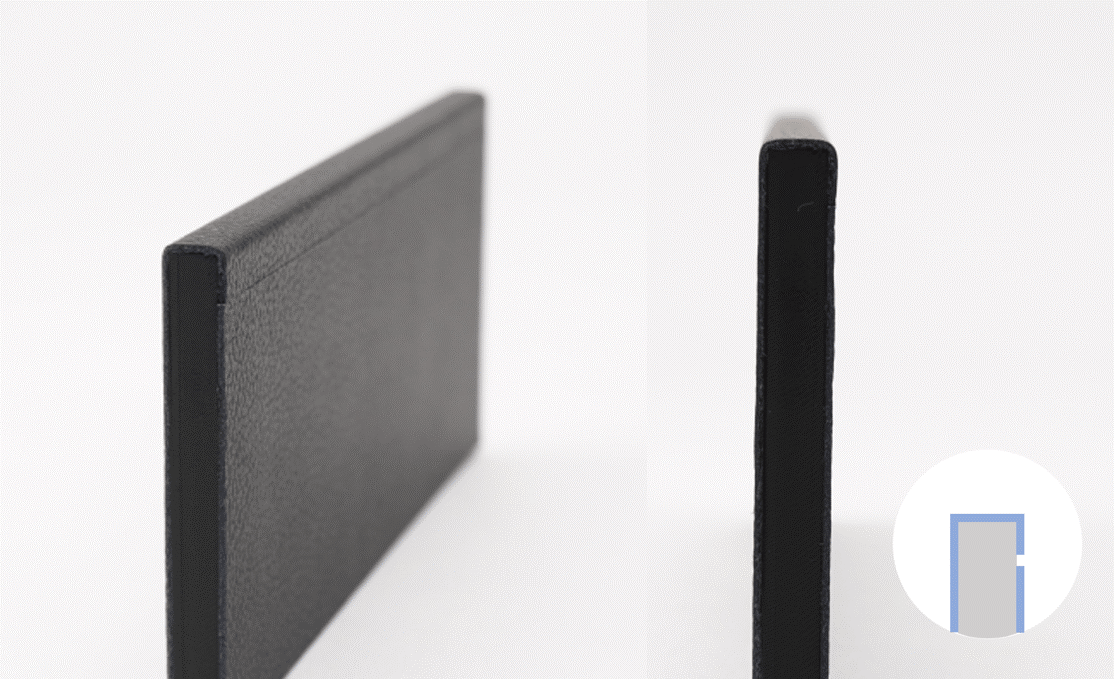Mar.23.2023
Part II: Leather and PU Fabric Edge-Wrapping Techniques
Apart from the two edge-wrapping techniques discussed in Part I , front and back wrapping and edge coating, there are three additional techniques for wrapping the edges of leathers and PU fabrics and are typically used in special cases.
Technique 3: Outer wrapping
This edge-wrapping technique is generally used in bag making, often accompanied by stitching to increase its durability.
Process: The front and back pieces of the leather or PU fabric adhere to the product's core at the corner of the edges. The exposed unfinished edge of the product is then covered with additional leather or PU fabric.
Advantage: The seams won't be visible on the side, and optional stitching can be added to increase the adhesion strength.
Disadvantage: For products with complex geometries, there may be several limitations and restrictions associated with using this technique.
Technique 4: Edge-to-edge wrapping
This edge-wrapping technique has the least impact on the product's appearance and involves a combination of manual processes and the use of jigs. With proper execution, the seams can be minimally visible.
Process: The front and back pieces of the leather or PU fabric adhere to the product's core. The leather or PU fabric is cut and removed so that the two panels of leather or PU fabric meet at the side of the product, along the seam line .
Advantage: Overall, this technique yields better results, and the leather or PU fabric-wrapped product's 3D geometries can be showcased and displayed from all sides.
Disadvantage: This edge-wrapping technique requires high-skilled workmanship and is challenging to apply. The seam lines will be more noticeable for leather or PU fabrics that are difficult to cut manually.
Technique 5: Backside overlap wrapping
If a product has a primary and secondary surface, this edge-wrapping technique can be used to conceal the unfinished edge onto the secondary surface, increasing the overall edge-wrapping quality of the product.
Process: The leather or PU fabric adhere to the core of the product's primary surface and is extended and lapped over to the product's backside. The leather or PU fabric is then cut and adhered to the secondary surface.
Advantage: There are no visible seams on the product's primary surface, resulting in a better overall appearance. This edge-wrapping technique is uncomplicated and doesn't require high-skilled workmanship.
Disadvantage: Based on the leather or PU fabric's elasticity, the corner areas of the leather or PU fabric on the product's backside may be prone to wrinkles; therefore, the seams should be on a flat surface for better results.




